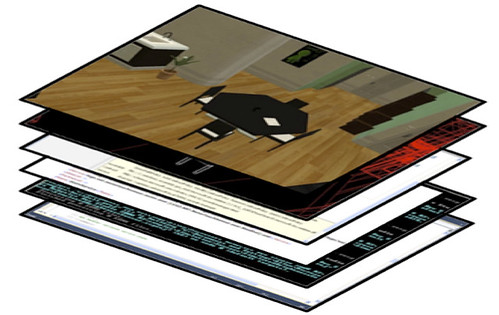Eleventh International Conference on the Design of Cooperative Systems
27-30 May , 2014
Maison des Sciences de l’Homme et de la Société Sud-Est
Nice, France
http://coop2014.wordpress.com
******* Important dates ********
- 8 November 2013 Deadline for paper submissions
- 1 February 2014 Notification of acceptance/rejection
- 15 February 2014 Camera ready Papers
- 27-30 May 2014 COOP 2014 conference in Nice
****** Introduction ************
COOP is one of the key European conferences on Cooperative Systems, Computer Supported Cooperative Work (CSCW) and Collaborative Computing and is affiliated to EUSSET - the European Society for Socially Embedded Technologies.
COOP 2014 will be the eleventh edition of the biennial COOP conference and will take place in Nice, France and hosted by the Maison des Sciences de l’Homme et de la Société Sud-Est.
Historically, COOP brought together the French tradition in Cognitive Ergonomics and the European tradition of CSCW. However, while this history is important, the focus of COOP has developed over the last few conferences. It now embraces a wider set of research questions on technologies and related issues within social, organisational and societal settings. The conference aims to bring together researchers and practitioners who contribute to the design, assessment and analysis of cooperative systems and their integration in organizations, public venues and other settings. The COOP conferences promote the idea that cooperative systems design ideally requires a deep understanding of collective activities, involving both artifacts and social practices, within a given in context.
In keeping with the conference’s tradition, COOP 2014 will take place in an Intimate setting, facilitating in-depth discussion and feedback in a multi-disciplinary environment. As well as welcoming back experienced researchers, academics and practitioners we are keen to embrace a wider research community. We welcome different perspectives from those doing relevant work who have not been to COOP before and we are paying special attention to encouraging up-and-coming researchers within the community with some specially designed features within the programme.
Contributions are solicited from a wide range of domains contributing to the fields of cooperative systems design and evaluation: CSCW, HCI, Information Systems, social and collaborative media, multi-agent systems, organizational and management sciences, sociology, psychology, anthropology, ergonomics, design, etc.
COOP 2014 will feature a single-track program of high-quality research papers, including a session dedicated to the work of early-career researchers, a workshops and masterclasses track and a Doctoral Colloquium.
For the “Early Career Researchers Track”, we encourage early career researchers who wish to publish their work and receive in depth-feedback (PhD students close to completion, < 3 years post-doc experience, etc.) to submit to the track, which will constitute of a special paper session in the main conference program. The papers will be included in the main conference proceedings.
********* Submissions **********
Accepted papers will be included in a book of proceedings published by Springer, and will be indexed in the ACM digital library
Full papers must be no longer than 16 pages and formatted according to the Springer template:
http://www.springer.com/authors/book+authors?SGWID=0-154102-12-417900-0
Papers submissions will take place via Easychair and the submission system will go live in the near future.
*****Other Submission Categories*****
Submission requirements and deadlines to be announced soon for:
Workshops
Masterclasses
Doctoral Colloquium

